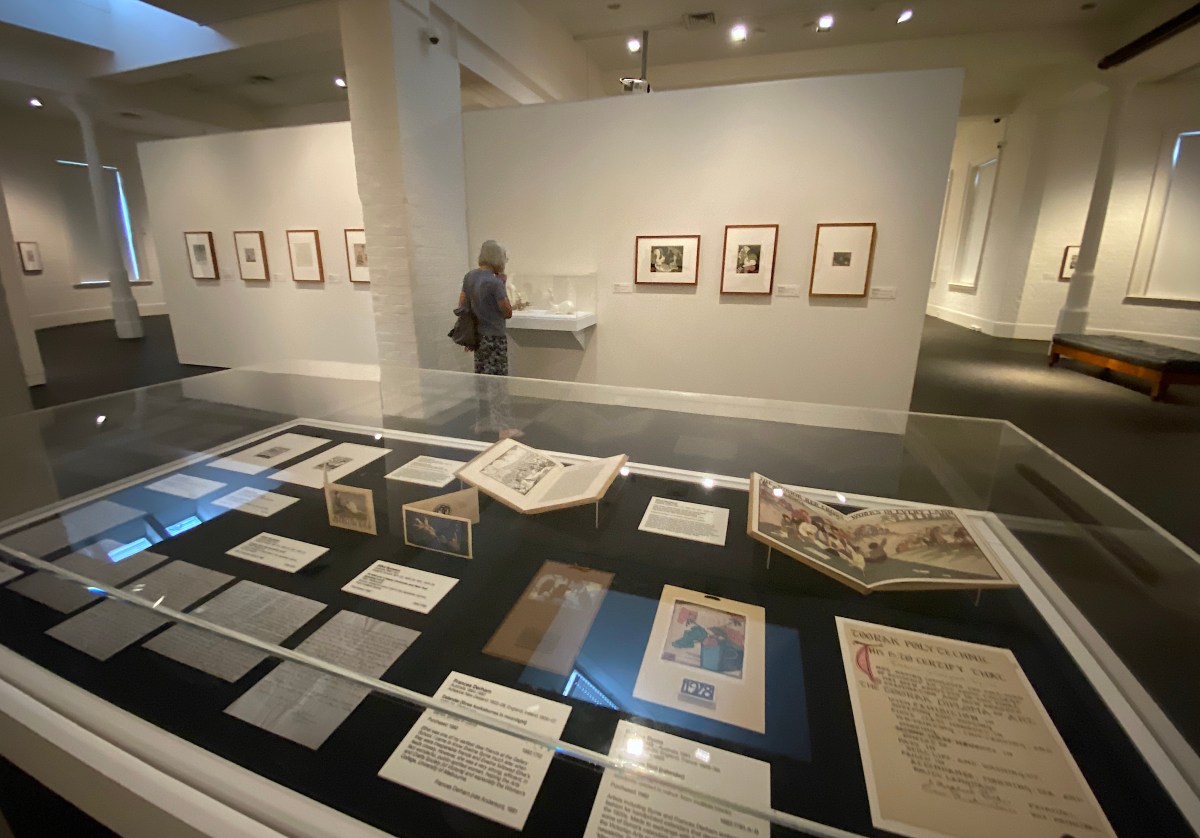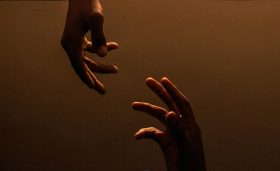Ethel Spowers (1890-1947) and Eveline Syme (1888-1961) – two names less often remembered in art history’s roll call and yet, like many women artists of their generation, their contribution was outstanding at a moment when fresh conversations were shaping the landscape of making in Australia.
Curated by Dr Sarina Noordhuis-Fairfax (who also curated the survey exhibition of Cressida Campbell concurrently on show at the National Gallery of Australia), this exhibition has been parcelled up by the NGA to tour.
Mostly discrete, framed works on paper, and some support material in the way of journals and historical ephemera, this exhibition has an incredible richness and depth – making it an educational journey for those who take the time to sit with it.
I have always loved the few works by Spowers that hang across our state galleries – which are favourites with many of their visitors and often on permanent display – but I knew little of her wider oeuvre, or her life. Joining the trend for contemporary exhibitions to diligently rewrite art history – in particular the Know My Name initiative that inspired this exhibition – Spowers & Syme is a welcome ‘gap fill’.
Spowers and Syme are described as life-long friends who travelled and studied together. Their bond was an unlikely one – the daughters of rival media families in Melbourne, where they were heady players in the local art scene.
Gaining a reputation as an illustrator of fairy tales, and respected for her linocuts, Spower’s work often featured everyday subject matter like children on swings, playing tug of war, ice skating or picnicking on a bank holiday. But her work was not confined to frivolities. In 1927 Spowers and Syme holidayed in Tasmania capturing the melancholy of Port Arthur, as seen in Spowers’ print The Island of the Dead. Their work also expressed a fever for the modern sentiment and – this is where it gets exciting – it was observed as a fusion of influence and locations, which became stronger across the years.
The pair were part of a new independent generation of artists, and women, who were able to travel, studying under avant-garde teachers in England and France. Spowers was associated with the Grosvenor School of Modern Art in London, studying under Claude Flight and later Iain Macnab, which dramatically influenced her style.
She brought these learnings back to Australia in her own work but, just as importantly, was a founder of the Contemporary Art Society, promoting modern art in Australia and staging group exhibitions with Syme and her contemporaries.
Their contribution to the advancement of printmaking in Australia – and an experimental verve for the medium that reflected the pace of the modern world – is an incredible legacy mapped out across this exhibition.
It also includes prints by artists George Bell (Australia/England), Cyril E Power (England), Nutter Buzacott (Australia), Sybil Andrews (England/Canada), Claude Flight (England), Lill Tschudi (Switzerland/England/France), Frank Weitzel (New Zealand/England/Australia) and Dorrit Black (Australia/Europe/US).
While this provides context for the works that Spowers and Syme were making, it also demonstrates a global modern language that was holding these artists in sync. It is a really fascinating view to consider back-to-back, and in depth, with Spowers’ and Syme’s works.
Overall, this is not the kind of splashy, immersive, blockbuster bling that is scheduled to draw in the January crowds, and in that it is a brave choice by the gallery. Although it is a quieter show, it is full of gems that are accessible and well-loved. There is also something terribly satisfying in walking away from an exhibition feeling that you have truly learned something. It is a hidden gem not to be missed.
Spowers & Syme
S.H. Ervin Gallery
3 December – 12 February
Ticketed



_Encounters-in-Reflection_Gallery3BPhoto-by-Anpis-Wang-e1745414770771.jpg?w=280)

